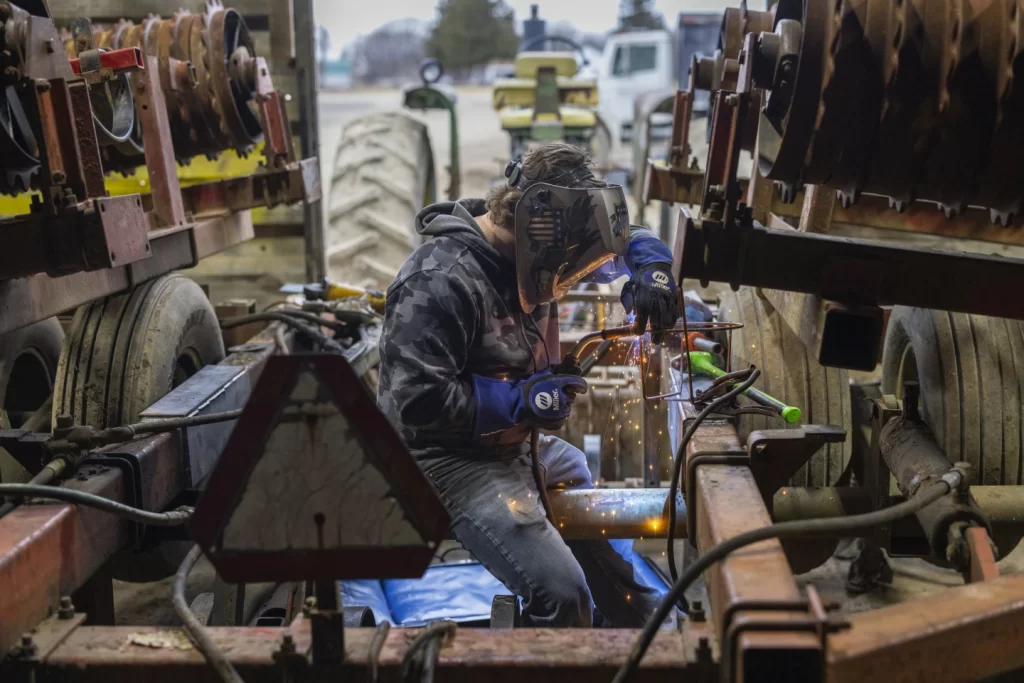
PERRY, N.Y. — As a student in western New York’s rural Wyoming County, Briar Townes honed an artistic streak that he hopes to make a living from one day. In high school, he clicked with a college-level drawing and painting class.
But despite the college credits he earned, college isn’t part of his plan.
Since graduating from high school in June, he has been overseeing an art camp at the county’s Arts Council. If that doesn’t turn into a permanent job, there is work at Creative Food Ingredients, known as the “cookie factory” for the way it makes the town smell like baking cookies, or at local factories like American Classic Outfitters, which designs and sews athletic uniforms.
“My stress is picking an option, not finding an option,” he said. Even though rural students graduate from high school at higher rates than their peers in cities and suburbs, fewer of them go on to college.
College enrollment for rural students has remained largely flat in recent years, despite the district-level efforts and stepped-up recruitment by many universities. About 55% of rural U.S. high school students who graduated in 2023 enrolled in college, according to National Clearinghouse Research Center data. That’s compared to 64% of suburban graduates and 59% of urban graduates.
College can make a huge difference in earning potential. An American man with a bachelor’s degree earns an estimated $900,000 more over his lifetime than a peer with a high school diploma, research by the Social Security Administration has found. For women, the difference is about $630,000.
A school takes cues from families’ hopes and goals
A lack of a college degree is no obstacle to opportunity in places such as Wyoming County, where people like to say there are more cows than people. The dairy farms, potato fields and maple sugar houses are a source of identity and jobs for the county just east of Buffalo.
“College has never really been, I don’t know, a necessity or problem in my family,” said Townes, the middle of three children whose father has a tattoo shop in Perry.
At Perry High School, Superintendent Daryl McLaughlin said the district takes cues from students like Townes, their families and the community, supplementing college offerings with programs geared toward career and technical fields such as the building trades. He said he is as happy to provide reference checks for employers and the military as he is to write recommendations for college applications.
“We’re letting our students know these institutions, whether it is a college or whether employers, they’re competing for you,” he said. “Our job is now setting them up for success so that they can take the greatest advantage of that competition, ultimately, to improve their quality of life.”
Still, college enrollment in the district has exceeded the national average in recent years, going from 60% of the class of 2022’s 55 graduates to 67% of 2024’s and 56% of 2025’s graduates. The district points to a decision to direct federal pandemic relief money toward covering tuition for students in its Accelerated College Enrollment program — a partnership with Genesee Community College. When the federal money ran out, the district paid to keep it going.
“This is a program that’s been in our community for quite some time, and it’s a program our community supports,” McLaughlin said.
About 15% of rural U.S. high school students were enrolled in college classes in January 2025 through such dual enrollment arrangements, a slightly lower rate than urban and suburban students, an Education Department survey found.
Rural access to dual enrollment is a growing area of focus as advocates seek to close gaps in access to higher education. The College in High School Alliance this year announced funding for seven states to develop policy to expand programs for rural students.
Higher education’s image problem is acute in rural America
Around the country, many students feel jaded by the high costs of college tuition. And Americans are increasingly skeptical about the value of college, polls have shown, with Republicans, the dominant party in rural America, losing confidence in higher education at higher rates than Democrats.
“Whenever you have this narrative that ‘college is bad, college is bad, these professors are going to indoctrinate you,’ it’s hard,” said Andrew Koricich, executive director of the Alliance for Research on Regional Colleges at Appalachian State University in North Carolina. “You have to figure out, how do you crack through that information ecosphere and say, actually, people with a bachelor’s degree, on average, earn 65% more than people with a high school diploma only?”
In much of rural America, about 21% of people over the age of 25 have a bachelor’s degree, compared to about 36% of adults in other areas, according to a government analysis of U.S. Census findings.




